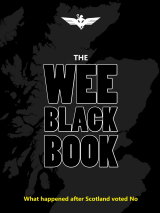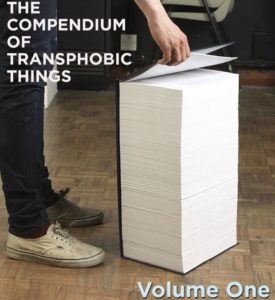Straw dogs
A press release on the always-positive Scottish Labour website this morning blares a wake-up call to the reckless and irresponsible Scottish Government. “IPPR Report Shows SNP Economic Policy Is Financially Illiterate”, it rages, going on to quote the party’s finance spokesman Ken Macintosh:
“This report shows that the SNP’s economic policy is financially illiterate. Not only do we get more spending than we raise as a result of being in the Union, but the SNP’s commitment to turn Scotland into a low-tax corner of Europe would see revenues plummet and public spending slashed to the bone. Scotland would be crippled by what could only be described as economic suicide.”
Oof. Strong words for sure. Hang on, though – which SNP economic policy are we actually talking about here? The preamble to Macintosh’s furious blast references “the SNP’s plans to cut Corporation Tax to 12.5%”. But the only problem with that is that the SNP doesn’t appear to have any such plans.
We scoured Google for evidence, but haven’t been able to find a single story, report or quote where the SNP has ever proposed a 12.5% rate of CT. What there are are lots of stories where journalists on Unionist newspapers note that the Nats have suggested the possibility of cutting Corporation Tax were it to be devolved to the Scottish Parliament, and in which said journalists have also claimed that Northern Ireland – where the tax is likely to be devolved to Stormont – intends to cut it to 12.5%.
We can’t, we should point out, actually find any solid evidence to support this claim either – it seems to be based purely on the fact that the tax is 12.5% in the Republic Of Ireland, and that the logical thing would therefore be for NI to set the same rate in order to compete better with its southern neighbour.
The journalists have nevertheless then put two and two together and assumed that because the SNP wants control of the tax devolved like it is in NI, and because the level there might be 12.5%, that the SNP’s plan must be to cut it to the same level in Scotland. The SNP itself, on the other hand, has never said any such thing. Examine this piece by former Labour spin doctor Lorraine Davidson in The Times all the way back in August 2011, for example:
“Alex Salmond yesterday set out his long-awaited plans for cutting the overall rate of corporation tax in Scotland — but backed away from a commitment to reduce it to 12.5 per cent, as had been widely predicted.”
Observe the use of the word “predicted”, which is a sneaky journalistic way of not-quite-admitting that you’ve got something completely wrong and that the entity you’re talking about didn’t say the thing you thought they would. And interestingly, if you dig out the IPPR report cited (but not linked to) in Labour’s press release, it only attributes the notion of a 12.5% rate to “some leading Scottish business figures”, with no mention of the SNP having put forward or even endorsed the idea.
[EDIT: an alert reader in the comments below reveals that the SNP’s actual suggested rate of Corporation Tax for Scotland is 20%, not 12.5%.]
The straw man is a key weapon in Scottish Labour’s armoury. Bereft of any policies of their own, they can’t attack the SNP by putting forward alternative proposals, so the only route left is to pretend the Nats’ policies are something other than what they really are, and then rubbish the fake policies which exist only in Labour’s own propaganda. It’s an ugly, negative tactic which conspicuously failed to work between 2007 and 2011, but the party seems too paralysed by deep-rooted tribal oppositionism to try anything else.
In the interests of fairness, we contacted both Scottish Labour and Ken Macintosh and politely asked them if they could provide a single source for the SNP actually advocating a cut in Corporation Tax to 12.5%. If they come up with one, we will of course let you know immediately.




















“we get more spending than we raise as a result of being in the Union”
Wow, I had no idea the UK was unique in the world in being able to borrow money!
Unless Ken is trying to suggest that the UK does not have to borrow money and the extra spending we get (in absolute terms – we all know we get LESS in relation to the rest of the UK) is a subsidy from England, then I’m not quite sure what his point is. And if that IS what he’s suggesting, then it’s demonstrably untrue.
Lies. It’s all they have.
As far as that point goes, Doug, I only recently realised it myself. I think it needs wider dissemination, which to be fair I see people trying to achieve.
Evidence that the SNP had different plans might be helpful. After all, if John Swinney had talked openly about this then we might know what the SNP had in mind. If he’d done that, then we’d be able to link to his comments. Something like this maybe: link to scotland.gov.uk
Well, 12.5% and 20% are close enough that confusing the two is perfectly natural. An honest mistake then, nothing sinister about it at all.
Nice work, added as an edit.
@Angus McLellan
Nice link, makes a difference when you actually have what the government says in front of you.
I’d be fascinated to find out the source of their information, since Angus had a wildly different yet very official source to hand in the Scotgov web site. I’d be even more fascinated to see the results of the SG calling Mcintosh and the report’s authors out on that source.
FMQs 4/10/12 – another example of transference from Lamont/Labour?
“Johann Lamont: The First Minister loves having straw men to cut down.”
http://www.scottish.parliament.uk/parliamentarybusiness/28862.aspx?r=7401&i=67520&c=1368943
(other examples being the accusations of negativity, of lack of detail, of inconsistency, of “Tartan Tories” etc etc…)
“We get” means we are given our share of the debt. Nothing more. That debt relates to the annual defecit.
It would be easier for an Independent Scotland to cut our annual defecit, without effecting ordinary people. In arears such as defence etc.
This is a cynical strawman atttack to divert attention away from the disaster of a speech given by Alistair Darling, the Abominable No Man, last Friday at the John P MacKintosh Memorial Lecture in Prestonpans.
Even The Scottish Sun tore Mr Darling a new one over the ludicrous substance of the speech
link to thescottishsun.co.uk
Oh dear, nothing good is happening on the Bitter front so out they come with more of their lies, deceit and misinformation. Never mind there are always these stories to help balance the books a wee bit.
link to heraldscotland.com
Looks like A.s. is a popular speaker, can’t exactly say the same about Darling. Apparently there are still loads of tickets available for his interview with John Snow. Now I wonder why that is……..
Talking of the big featie, it would appear that he might be trying to push his influence, does he actually have any influence, over onto the Electoral Commission. Now in my mind this is more than a bit naughty of him,, but then again when has he ever cared about the rights and wrongs of what he does.
link to scottishtimes.com
Finally here’s a piece by Joan McAlpine in the D.R. She deals a bit with the McCrone report. Joan also quotes from a Price Waterhouse report from last year.
”
Northern Lights, a Pricewaterhouse Coopers report published last year, reported that there was £376billion of value left in the North Sea over the next 40 years.”
link to dailyrecord.co.uk
I think this is about the third article in the D.R. this week that pours scorn over the unionists. I wonder, just the slightest of wonderings you understand, but all the same I wonder if there are one or two individuals at the D.R. who might, just might, be beginning to see the error of their ways. Only time will tell for sure but it does make for an interesting week ahead methinks.
Corporation tax is complicated. Isn’t everything?
If you read the media reporting on the Commons’ Public Accounts Committee fun with Google, Starbucks and Amazon yesterday you might be left with the impression that the Netherlands, Switzerland and Luxemburg have low rates of corporation tax. The situation in Luxemburg is complicated as there are 3 different regimes for corporate tax, but the basic one has a 28% rate. The rates in the Netherlands and Switzerland are 25%. And in the UK? That’ll be a “predatory” 23%.
Of the three companies, only Google make use of truly low-corporation tax havens. Amazon and Starbucks have much more complex setups which don’t rely on low headline rates of tax to reduce their liabilities.
“..more spending than we raise as a result of being in the Union……”
The No’s have a graphic to back this up……at this point I was going to link to a graphic from the Better Together website’s “photojournal”, but it appears to have disappeared. It showed that Scotland receives 20% more spending than it contributes. Pretty damning stuff, especially as the figures were taken from GERS.
The only problem was that they had appeared to have missed the full implication of their figures, as this graphic shows (the top part being the original Better Together graphic);
link to pbs.twimg.com
No wonder the original graphic appears to have been removed, but no surprise that Ken MacIntosh and Labour seem to be a bit slow on the uptake.
The good news is that they appear to be happy to use GERS as an authoritative source.
Keith B
I had some fun pointing this out to the Better Together lot, but the graphic did boil down to these explicit points, omitting the implicit (in square brackets)
“Stay in the union because you have a SCARY deficit/debt [, although the deficit would be 17% less in an independent Scotland]”
“Things are bad in Scotland, [but if you stay in the UK, you’ll have the opportunity to have it a lot worse]”
Of course, this assumes that all spending/tax etc would be identical in an independent Scotland (which is, again, manifestly unlikely to be the case).
I see loyal Labour blog Left Foot Forward has now run a remarkably similar story:
link to leftfootforward.org
12.5% or 20% it doesn’t actually matter.
Having recently read your articles on PFI, Labour have some gall to call anyone financially illiterate!
I wouldn’t trust them to correctly manage the whip round for the bus driver that took them to conference!
Twelve and a half per cent.
Twenty per cent.
Hmm, I can see how it is an easy mistake to make.
Both claims start “twe” and both claims end “per cent”
The only problem is the middle bit, so I can see how Labour can make such a fundamental mistake. Perhaps next time they should read the WHOLE thing and not just the start and finish bits. 😀
The main message that I take from Mackintosh’s statement is that he ( and labour) expect the SNP to be the future Government in an independent (and perhaps not independent) Scotland.
Labour have obviously already given up any thoughts of future Government and can only make up porkies about what the SNP will do.
I am waiting for Labour to come out and join the Tories in running down the SNP Government’s ambition to have highspeed rail between Edinburgh and Glasgow.
For me, the attack by the Tories on this ambition/vision by a Scottish Government is symptomatic of Tories’ visceral antipathy to anything Scotland does outside the parameters of Westminster. I knew the Tories were bad for Scotland but just how bad is probably just coming home to me. They really do expect us to lie down, be quiet and wait until Westminster tells us what to do.
@Arbroath1320: Right. So the moral of the story could be “donut use predicate tea”. Or even “don’t use predictive text”.
Rev Stu
To be fair to Leftfootforward they have pointed out in the article Labour are wrong about the twelve and a half tax rate.
The appropriate line is,
The only problem is that the SNP’s policy is to cut corporation tax to 20%, a position the IPPR states is “achievable”.
Their starting line is also worth looking at,
“Financially illiterate”? Scottish Labour must do better
Maybe Denis Canavan is starting to get his message across?
Ken Macintosh does have quite a compelling line of logic though. It seems that the rUK contributes £500 billion of UK taxation, but receive £622 billion of UK spending.
So I guess that means Scotland is subsidising England, Wales and Northern Ireland to the tune of £122 billion a year!
Amazing what you can do with inverse figures.